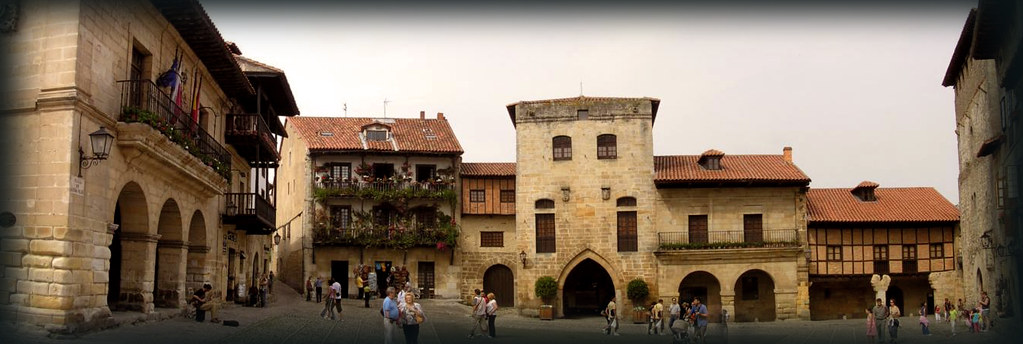
photo by Fernando on flickr: Plaza Santillana del Mar
This year’s theme is “Basque, Bar and Beautiful Village”.
This time we’re going to the Basque Country in the north of Spain.
It’s been 10 years since my first trip to Europe in 2006 to visit castles in Loire, France. This trip with a rental car expanded my range of activities and awakened me to the true joy of driving, even though I had hardly driven in my 20s.
Of course, I chose the area where I can drive this GW. If I can enjoy driving and enjoy the history, Europe is the best candidate for me.
本年は[highlight]「スペイン・バスク地方」[/highlight]へ行く予定です。
The Basque Country is a region that straddles the northern part of Spain and the southwestern part of France, and is famous for its unique culture and language. According to WIkipedia information, the Basque Country has “the highest per capita income of all Spanish provinces,” “a GDP per capita nearly 30% higher than the Spanish average and 40% higher than the European Union average,” and “an unemployment rate well below the overall Spanish unemployment rate. The unemployment rate is much lower than that of Spain as a whole.
For these cultural and economic reasons, the region now retains a high degree of autonomy, but it is also a region with a very strong sense of independence from Spain. In the past, the region was known as a stronghold of anti-government forces (ETA), and there were occasional incidents of terrorism. However, after the fall of the Franco dictatorship, the region was granted autonomy, and with the subsequent economic development, it has been weakened over the past 10 years.
It is said that the arrest is gradually coming to an end. So, there will be no problem for normal sightseeing.
The places we will visit in the Basque Country are the major cities such as Bilbao, Vitoria, Donostia (San Sebastian) and the surrounding small villages and world heritage sites. I’m also planning to visit Guernica, a city that was severely damaged during the Spanish Civil War and is famous as the name of Picasso’s work. I’m not sure if Guernica has anything more than the “Guernica Tree”.
The Basque Country also straddles the French side. This is what is called the French Basque Country. We have visited this area before on our “Tour of France’s Most Beautiful Villages,” but there were some towns that we were not able to visit due to construction, and there are some new villages that were added in 2014, so we plan to visit them. More details will be provided later.
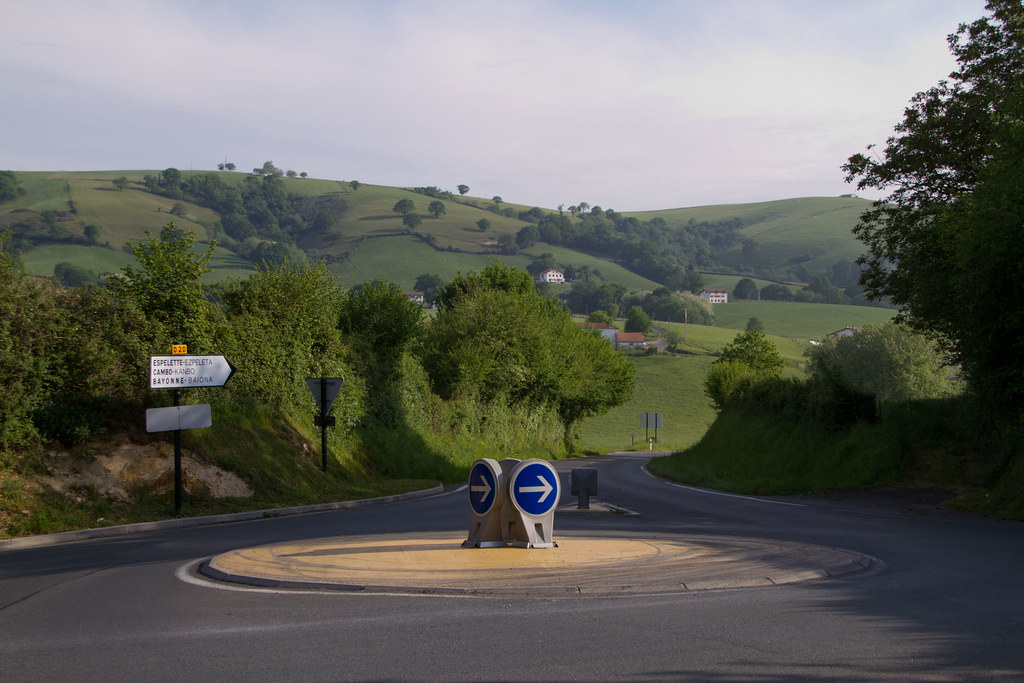
https://www.yuu-koma.jp/?p=7295
By the way, is French spoken in the Basque Country even in the Spanish side? I think you can get by with English, though. I’d like to write down some simple Basque (greetings and thank yous) so that I can speak it.
Donostia (San Sebastián) is the European Capital of Culture for 2016
One of the most exciting places to visit in the Basque Country is Donostia (San Sebastián).

Keta – 投稿者自身による作品, CC 表示-継承 2.5
The coat of arms of the city is very nice.

公式サイト:http://www.donostia.eus/より
So your website domain is .eus?
Furthermore, Donostia has been selected as the European Capital of Culture this year, 2016. I found a special website.

It seems that many museums in the city (Musée San Telmo, etc.) are holding related events. You can check some of them on the website, and then use local information. We are planning to take a full itinerary in Basque Country, so we will definitely stay in this city. I’m going to follow the usual pattern of fine-tuning the itinerary locally and having some idea of the hotel location before departure.
The “European Capital of Culture” was launched in 1983, and every year two European cities are chosen to host a variety of cultural events, including film, art and music.
欧州文化首都の制度概要
- EU 加盟国の中から、毎年「欧州文化首都」として都市を選定し、年間を通じて様々な芸術文化に関する行事を開催する。
- 当制度は、EU の文化政策において重要視されているEU 域内の緩やかな歴史的・文化的共通性と多様性を重視する「多様性の中の統合」という理念と密接に関連しており、域内の文化的共通性と多様性を同時に表現しようとする特徴を持っている。
- また、地域政策の観点から、地域活性化と観光客誘致が期待され、地域の経済的な発展の契機として位置づけられている。
- 更に長期的な文化活動を通じて、市民の連帯意識の向上や政治参加を促すことが期待されている。
According to this study, some cities may benefit from the short-term economic effects of a temporary increase in the number of tourists in the year of selection (ex: 11.4% increase in the number of overnight stays from 1989 to 2011 compared to the year before the event). In addition, the selection as European Capital of Culture has the merit of raising awareness of the city as a culturally attractive place. The selection of a city as a European Capital of Culture may also be an opportunity for some cities to improve and strengthen their infrastructure.
However, when it comes to San Sebastian, it is one of the most popular tourist cities in the Basque Country, so it seems that name recognition and cultural awareness have little impact on it. For example, cities like Prague, Bruges, and Brussels were already visited by a lot of tourists before they were selected, so they don’t think it’s particularly important. But it’s interesting to see what kind of atmosphere they have. By the way, I heard that San Sebastian is also famous as a “city of gastronomy”, so I’m looking forward to it.
Visit the villages of the “Association of the Most Beautiful Villages of Spain”.

photo by Fernando on flickr: Plaza Santillana del Mar
Another reason why we chose Spain is here, we are going to start the beautiful village tour Spain edition.

I’ve mentioned it in this blog before when it was just inaugurated, but finally I had a chance to visit it in earnest. It seems that there are registered villages around Valencia and Teruel, so I’ll try to visit them in the first half of the stage.
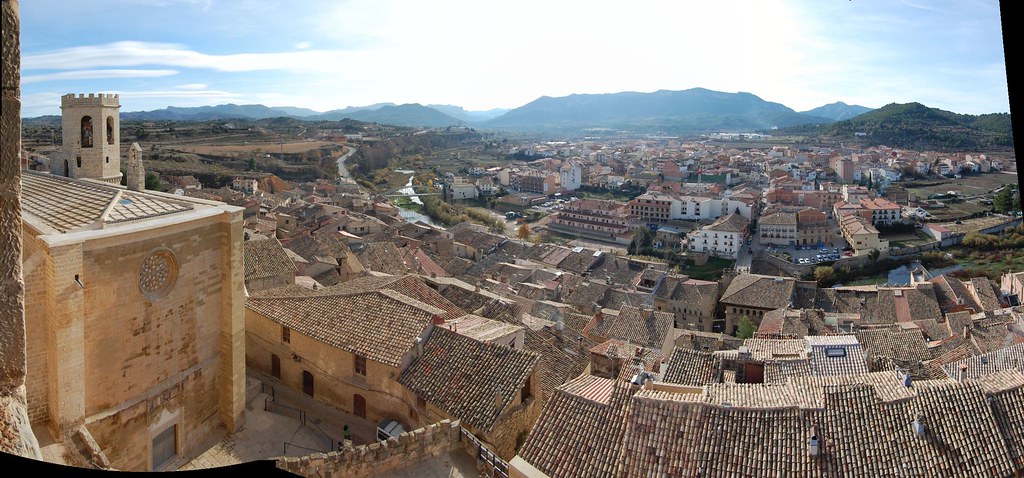
photo by Felix on flickr: Panorámica de Valderrobre desde el castillo
We plan to visit less than 20 villages throughout the trip.
Navarrenx, the most beautiful village in France, newly added in 2014
In January 2014, I visited a village on Reunion Island to complete the Most Beautiful Villages of France, but to my surprise, a new village called Navarrenx was added in July 2014, so technically it is no longer complete. However, this village is within easy reach of French Basque, so we are planning to visit it on this trip. If I can just go here, I will be truly complete.

The website was very nice. They are probably putting a lot of effort into tourism. By the way, considering that you have to apply for the registration as “the most beautiful village in France” by standing for it by yourself, I could feel their enthusiasm. It’s wonderful. I’m really looking forward to visiting.
Will you reach the 200th World Heritage Site in total?
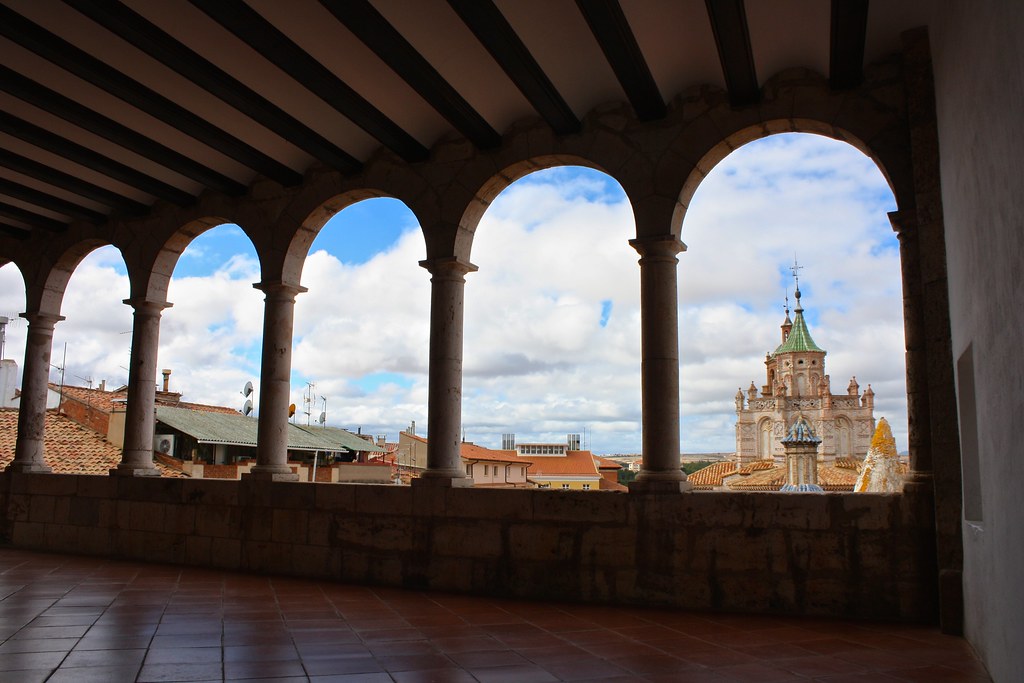
photo by Trevor Huxham on flickr: Teruel Museum / Museo de Teruel
Again, we plan to visit several places that are on the World Heritage List. We would like to visit the following 7 places.
- University and Historic Centre of Alcalá de Henares – (1998, Cultural Heritage)
- Historic Citadel of Cuenca – (1996, Cultural Heritage)
- Vizcaya Bridge – (2006, Cultural Heritage)
- Aragon’s Mudejar architecture – (1986, enlarged in 2001)
- Altamira Cave – (1985)
- Catalan Romanesque Churches in Bar de Boi – (2000)
- Vizcaya Bridge – (2006)
The hardest one to visit will definitely be the Catalan Romanesque churches of Bar de Boi. I’m going to go all the way to the mountains of Pyrenees just for this. I have no idea if it’s worth the trouble. Still, I’ll try my best because I don’t think I’ll ever go there again.
Another reason why I’m doing my best is because I’m trying to reach the goal of visiting 200 World Heritage sites. It’s only a World Heritage Site, but it’s still a World Heritage Site. Although I don’t plan to conquer all of them, I will visit as many as I can this time, because they have historical and sightseeing value.
Food Culture Survey: Spanish Bar and Wine
It’s a little over the top to say that, but I’d like to feel the simplicity and goodness of the local cuisine that I felt during my visits to southwest France and southern Italy again in Spain. In the past, when I was on the pilgrimage route to Santiago de Compostela and on a road trip, I couldn’t fully enjoy the bars in the countryside, so this time I plan to experience them well.
There are a few Spanish bars in Japan, but like Italian food, they seem to be over-arranged, so I hope to confirm that this is not actually the case.
Unlike restaurants, Spanish bars, especially in the countryside, often don’t have menus, so I guess I need to study what they have in advance. There are some menus with pictures in “Chikyu no Arukikata”, so I’ll refer to it, but I have a feeling it’s not reliable.
Bars and tapas are good, but it is essential to taste the local cuisine in a restaurant. The Basque Country, in particular, is one of the most gourmet areas in Spain. The Basque Country seems to have a different food culture between the coastal and inland areas, and between the Spanish and French sides. From fish to meat, cured ham (Chambon de Bayonne) and cheese, fizzy wine (Chacolí) and cider, and desserts such as chocolate and gateau basque, the Basque Country must be rich in food.
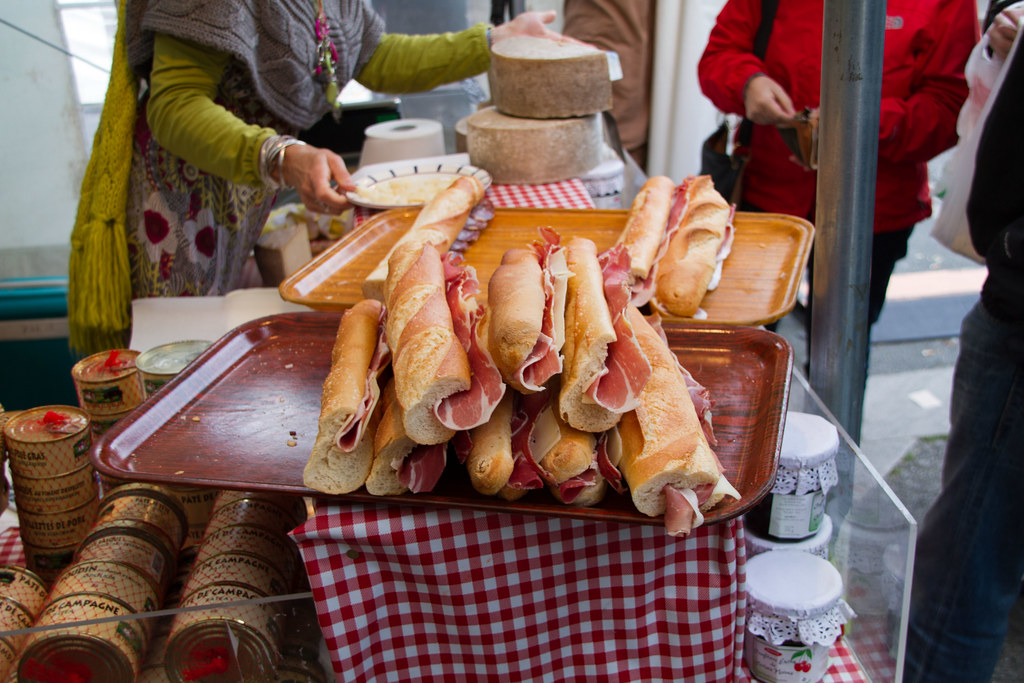
2011年に訪れたバイヨンヌの市場より yuukoma on flickr
Among them, Donostia (San Sebastián) is famous for its gastronomy. I want to enjoy plenty of good food here. Let’s investigate restaurants in advance.
Also, let’s not forget the wine. Rioja, the area just below the Basque Country, is one of the most famous wine regions in Spain.
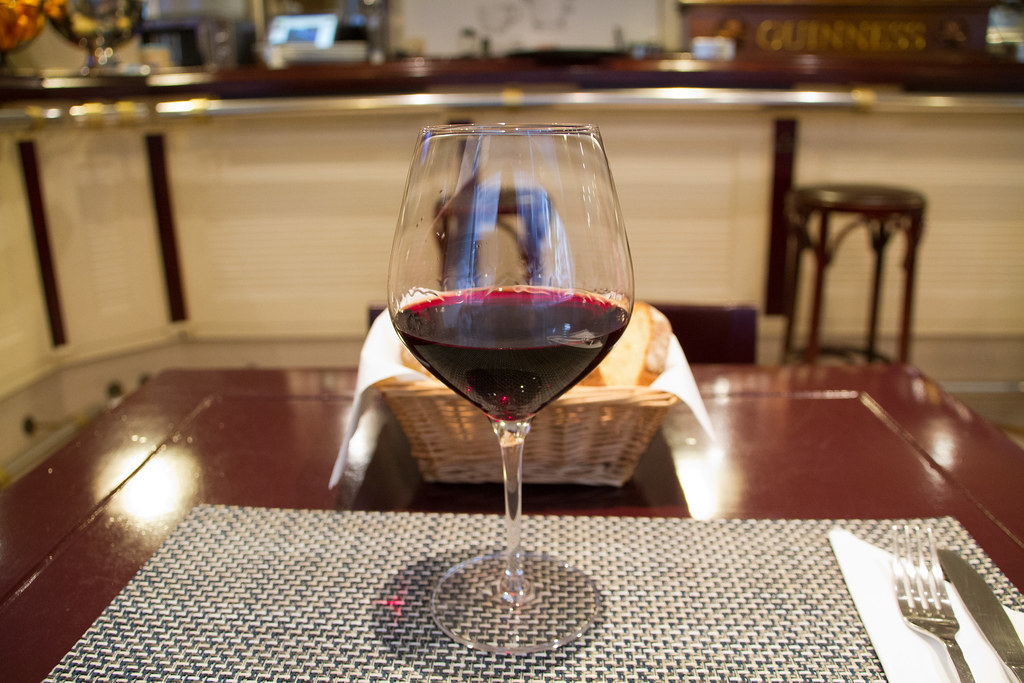
The Temprariño of this region is very famous and I am very excited to taste again the wines of Rioja that I tasted four years ago. This time I want to buy it as a souvenir to take home.
Prepaid SIMs might be at the airport.
A prepaid SIM to plug into your SIM-free iPhone is now a travel necessity. Apparently, you can get one at Barajas Airport in Spain, right outside the arrival gate. I referred to this site. If it’s not too late at night, it seems to be OK.
But what about when I am in French Basque? Is there a cheap SIM that works in France around Donostia?
The best way to prepare for a trip is to gather as much information as possible on the web beforehand that you can’t find in a guidebook.
Finally. Japanese guidebooks have very little information about Barcelona and its surrounding area, Madrid and its surrounding area, and areas other than Andalusia in the south. But actually, foreign guidebooks you can find in Japan also have little information about Basque Country and Northern Spain, though not as much as Japanese ones.
Of course, you can go to the local information desk or ask the concierge at your hotel, but with limited time, it is essential to gather information online in advance. Arranging airline tickets, car rentals, and hotels is almost effortless and smooth. So, it is the advance research of this sightseeing spot that I spend my time.
I still have a little less than two months to go, so I plan to take time out from my daily grind to research as many things as I can.


